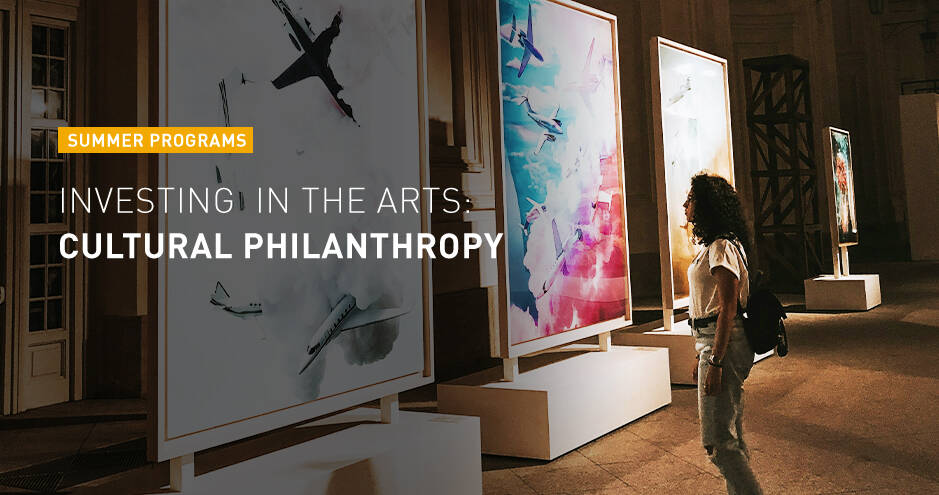How Philanthropy Is Changing the Arts and Culture Sector
The arts and culture sector provides significant social and economic value at the local, national, and global level. This impact can be measured in concrete terms, including revenue and job generation, as well as in the intangible feelings of inspiration and connection we derive from experiencing art in our daily lives. But how do creative projects come into being, and how is art and culture funded?

Public versus private support
This broad and diverse sector, which covers a range of industries from museums and galleries to film production, literature, and the performing and visual arts, depends on a combination of public and private support to survive and thrive. Alongside government funding, which can vary significantly by location, philanthropy plays a crucial role in enabling artists, creators, and organizations to develop and present innovative work, promote collaboration, address societal challenges, and enhance community wellbeing. Philanthropy encompasses various forms of support that can range from individual donations and corporate sponsorships to establishing nonprofit foundations and community-based organizations.
In a cultural context marked by constant change and rapid societal shifts, philanthropy increasingly intersects with areas such as environmental sustainability, corporate social responsibility, and the fight against inequality. In this environment, cultural workers and institutions must think creatively and entrepreneurially to remain relevant and resilient. They must also adopt innovative strategies to attract new audiences and the next generation of donors who tend to be more cause-oriented than institutionally focused, prioritizing issues of diversity, social justice, and environmental protection.
An effective business strategy
This shift can be seen not only among individuals but also across government, foundation, and corporate funders. From a business perspective, developing a compelling philanthropic mission and incorporating it into corporate strategies and communications can lead to benefits such as enhanced reputation, increased employee attraction and retention, and improved company culture.
Many companies are developing philanthropic initiatives around the causes their employees and stakeholders care about and that have a direct, measurable effect on society. Arts and culture organizations must therefore work to reflect these emerging priorities in their programming and communications, in order to demonstrate their ongoing relevance to prospective funders, audience members, and the general public.
A dynamic field of study and professional opportunity
As the arts and culture sector contends with reduced public funding, increased global competition, and rapid digital and environmental transformations, the role and influence of philanthropy will continue to grow. This powerful tool can be used to support and nurture cultural initiatives and institutions, address priority issues such as the environment and social responsibility, and positively affect communities. However, it can also serve to reflect and reinforce societal challenges and inequalities. As a result, tomorrow’s arts and business leaders need to develop a nuanced understanding of philanthropy’s capabilities and limitations.
Learning about various forms of investment and philanthropy in the arts and culture can be beneficial for several reasons:
1. Broadening Perspectives: It can enhance your understanding of this dynamic and diverse sector and how it is evolving and adapting in response to societal shifts.
2. Career Opportunities: If you are considering a career related to the creative and cultural industries, the nonprofit sector, or corporate social responsibility, it can boost your skill set and open up new professional opportunities.
3. Community Engagement: It can equip you with the knowledge and skills to contribute meaningfully to your community and make a lasting impact.
4. Understanding Social Issues: Learning about philanthropy can increase your awareness of social issues and the role of nonprofits and community organizations in addressing them.
5. Organizational Success: If you are involved in a nonprofit or cultural organization, understanding philanthropic trends and best practices can be critical to your organization’s success.
6. Personal Growth: Appreciating the role of the arts and culture in society can enhance your understanding of and engagement with the world around you, showing you that you are part of something that transcends everyday life.
This new two-week summer program at HEC Paris will provide you with valuable insights into the role of investment and philanthropy in the arts and culture, opening up potential career paths, from roles in institutional leadership and policy advising to corporate communications and arts entrepreneurship, equipping you to make a positive impact in your community and beyond.